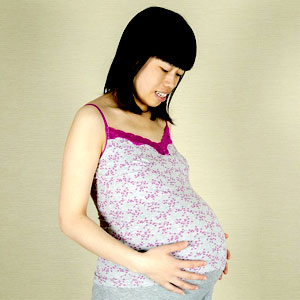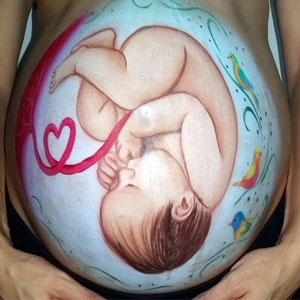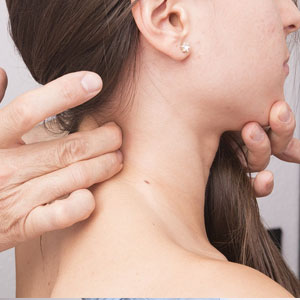Urinary Incontinence, Low Back Pain, and Radiating Pain Helped with Chiropractic
The Journal of Alternative, Complementary & Integrative Medicine published a study on November 13, 2017, demonstrating the positive results chiropractic care had for patients with urinary incontinence, low back pain and radiculopathy. Urinary incontinence is a common problem with associated lower back pain, as some of the same nerves involved in back pain also control the bladder.
 Urinary incontinence is the
inability to control the bladder. It can manifest as an
occasional simple leakage when coughing or sneezing, or it
can be severe where the urge to urinate comes on so suddenly
and severely that there is not time to make it to the
bathroom. The study reports that lower back pain is the most
common type of pain in adults with one in four reporting
some form of lower back pain the previous three months.
Urinary incontinence is the
inability to control the bladder. It can manifest as an
occasional simple leakage when coughing or sneezing, or it
can be severe where the urge to urinate comes on so suddenly
and severely that there is not time to make it to the
bathroom. The study reports that lower back pain is the most
common type of pain in adults with one in four reporting
some form of lower back pain the previous three months.
In this study, the records of 1367 patients suffering from lower back pain with radiating leg pain were reviewed. Of these, 119 patients, (8.7%) also had urinary incontinence. With the consent of these patients, their care was reviewed. Urinary incontinence with lower back pain is more common in women than in men. Of the total of 119 who met the criteria, 108 were female while only 11 were male. The age range for these patients was from 47 to 70.
All the patients in this study had been suffering from lower back pain for at least two years and had reported urinary incontinence for at least two months. Chiropractic and orthopedic examination procedures were performed to confirm lower spine problems. Additionally, an MRI study of all the patients confirmed a lower spine disc herniation that affected nerves in that area.
Chiropractic adjustments were given to each of the patients in accordance with the spinal findings. The average number of visits for patients included in this study was between seven and eight. The average time frame for chiropractic care was between one and eight weeks of care. The type of chiropractic care varied based upon the condition of the patient, their spine structure, age, and other factors specific to their situation.
In this study, the primary outcome measured was how often the patient had to urinate at night as well as any leakage or incidence of urinary incontinence episodes. The study results showed that 64.74% of the patients had complete remission of their urinary incontinence as a result of their care. Additionally, 30.25% showed at least a 25% or more improvement. Only 5.04% of the patients in this study did not show a significant change.
In their discussion and conclusion, the authors of this study point out that past discussions seem to discuss the idea that urinary incontinence was from a physical response to lower back pain. This new study suggests that the relationship between urinary incontinence and lower back and leg pain is more based upon neurological factors than physical ones. They state, "It is conceivable to the authors that chiropractic spinal manipulation exerts positive physiological responses in these patients. The results of this study are very promising with 113 (94.95%) patients reporting improvements."
 The symptoms of Tourette
syndrome can include repeatedly blinking of the eyes,
shrugging of the shoulders or blurting out unusual sounds or
offensive words. The tics, or involuntary movements
associated with this condition typically appear between the
ages of 2 and 15 years of age. Boys are three to four times
more likely to have this problem.
The symptoms of Tourette
syndrome can include repeatedly blinking of the eyes,
shrugging of the shoulders or blurting out unusual sounds or
offensive words. The tics, or involuntary movements
associated with this condition typically appear between the
ages of 2 and 15 years of age. Boys are three to four times
more likely to have this problem.  Pregnant women seek CAM
procedures for a number of reasons including musculoskeletal
problems, nausea, labor issues, lactating disorders, and delivery
issues, to name a few. The authors note that, "Of the
various practitioner-based CAM therapies, chiropractic has
been shown to be popular among women before, during, and
after their pregnancy."
Pregnant women seek CAM
procedures for a number of reasons including musculoskeletal
problems, nausea, labor issues, lactating disorders, and delivery
issues, to name a few. The authors note that, "Of the
various practitioner-based CAM therapies, chiropractic has
been shown to be popular among women before, during, and
after their pregnancy." The study begins by noting that
about 3-4% of pregnancies result in a breech presentation.
Current medical thinking is that a breech birth represents a
significant medical threat and therefore a Cesarean birth is
normally recommended in these cases. Since, for many reasons,
a normal head-first vaginal birth is preferable to a
cesarean birth, any reasonable process that
can correct the breech should be explored.
The study begins by noting that
about 3-4% of pregnancies result in a breech presentation.
Current medical thinking is that a breech birth represents a
significant medical threat and therefore a Cesarean birth is
normally recommended in these cases. Since, for many reasons,
a normal head-first vaginal birth is preferable to a
cesarean birth, any reasonable process that
can correct the breech should be explored.  In most people, the immune system
identifies and fights off dangerous pathogens and infections
to help the body stay healthy. An autoimmune disease is when
the body gets confused and attacks normal healthy cells such
as the skin, joints, kidneys, brain, and other organs.
In most people, the immune system
identifies and fights off dangerous pathogens and infections
to help the body stay healthy. An autoimmune disease is when
the body gets confused and attacks normal healthy cells such
as the skin, joints, kidneys, brain, and other organs.  Somewhere between 33% and 65% of
musculoskeletal neck pain will self resolve within one year.
However, the study reports that relapses are common, with
about 25% having neck pain again within a year. Neck pain is
more common in women than in men, and it is more common in
high income nations and in urban areas. The risk of neck
pain increases up untill between 35-49 years of age, after
which the prevalence of the problem seems to decrease.
Somewhere between 33% and 65% of
musculoskeletal neck pain will self resolve within one year.
However, the study reports that relapses are common, with
about 25% having neck pain again within a year. Neck pain is
more common in women than in men, and it is more common in
high income nations and in urban areas. The risk of neck
pain increases up untill between 35-49 years of age, after
which the prevalence of the problem seems to decrease.